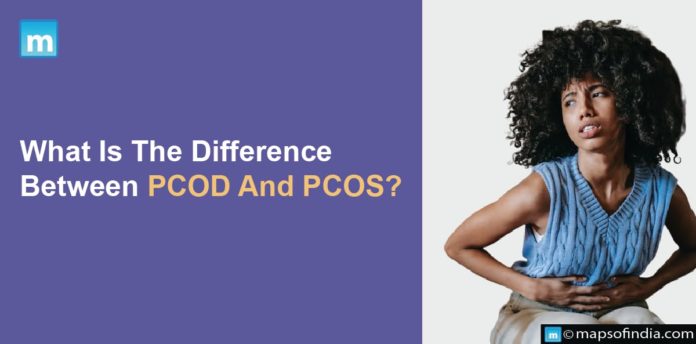PCOD and PCOS in Women
Progesterone and estrogen, which help to regulate the menstrual cycle, as well as small amounts of the hormones inhibin, relaxin, and androgens, are all produced by a woman’s ovaries, which are affected by a condition known as PCOD or PCOS. Infertility results from the ovary enlarging due to the accumulation of eggs and excessive male hormone release.
Difference Between PCOS and PCOD
| PCOD | PCOS |
| It is known as a common disorder affecting the women generation. | It is a very serious condition affecting a very small percentage of women. |
| The seriousness is lesser with not much complications for health. | The woman who gets affected with PCOS has complicated diseases such as heart prolems, diabetes and even higher blood pressure issues. |
| PCOD does not affect a women’s fertility. | PCOS has severe issues with fertility. The risk of miscarriage and infertility is higher. |
| The women with PCOD might release immature eggs. | PCOS causes the ovaries to stop releasing eggs which affects the health system. |
PCOD
The medical condition known as polycystic ovarian disease is characterized by the excessive production of immature or partially mature eggs by a woman’s ovaries during the reproductive years. Cysts eventually form from these eggs in the ovaries. The cysts cause the ovaries to enlarge and secrete large amounts of the male hormone androgen, leading to infertility issues, irregular periods, unwelcome weight gain, and other health problems.
The ovaries release odd amounts of androgen, which also mess with regulating female hormones. In addition to excessive body hair, acne, and hair loss, this hormonal imbalance causes irregular or protracted menstrual cycles. It may be challenging to conceive due to polycystic ovaries’ failure to form follicles and regularly release eggs.
PCOS
In the condition known as polycystic ovary syndrome (PCOS), the ovaries produce an excessive amount of androgens, which are male sex hormones that are typically present in women in small amounts. The condition known as polycystic ovary syndrome occurs when the ovaries produce an abundance of tiny cysts. Cysts do not continually develop in women with this disorder; they sometimes do in those who do not.
Sometimes a woman’s body doesn’t produce enough hormones required for ovulation. The ovaries can grow a lot of tiny cysts when ovulation doesn’t occur. These cysts have androgen hormones. High androgen levels are common in women with PCOS. More issues with a woman’s menstrual cycle may result from this. Additionally, it can trigger several PCOS symptoms.
Symptoms
There are many symptoms for both syndromes. Some are common, which are listed below:
- Weight Gain
- Loss of hair
- Menstruation at irregular times
- Increase in facial and body hair
- Heavy or no menstruation occurs
Diagnosis
The gynecologist gives checks and conducts the following for PCOD and PCOS:
- Blood Tests: A blood test gives results on the amount of hormones such as lipids in the body.
- Examination of pelvic region: Growth and abnormalities are checked on the reproductive organs.
- Imaging tests: These ultrasound scans provide a clear picture, including ovaries and cysts’ size and other structures.




